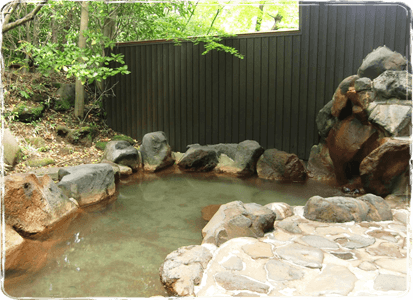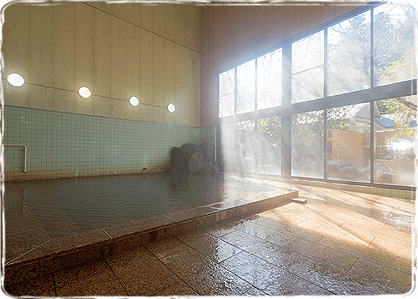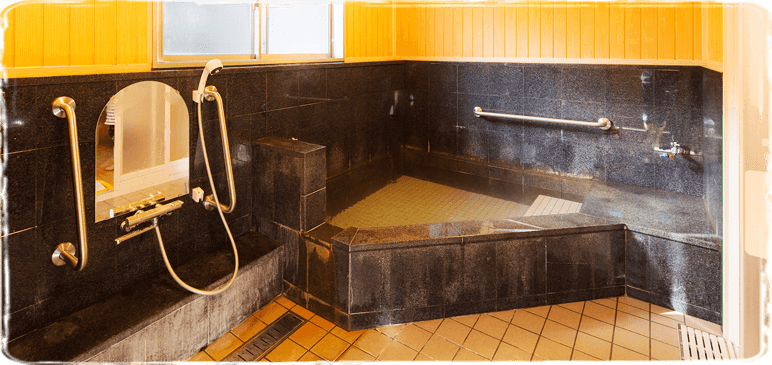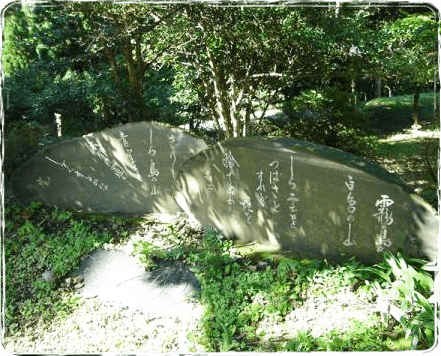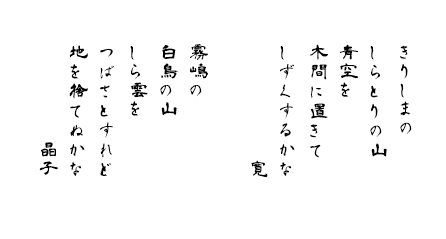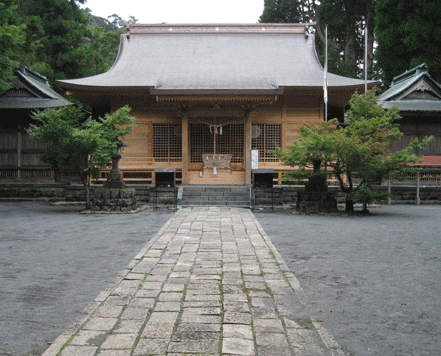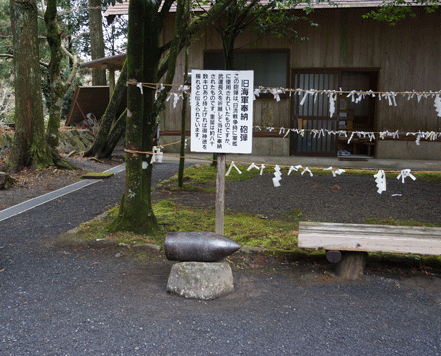Shiratori Shrine
Shiratori Shrine is said to have been founded over a thousand years ago by the priest Shoku (910–1007) after he was visited by an apparition while undergoing religious training in the Ebino Highlands. The apparition of the legendary prince Yamato Takeru instructed the priest to build a place of worship near the source of the Shiratori hot springs. Shoku founded Shiratori Shrine in 959.
The honden main hall was rebuilt toward the end of the Edo period (1603–1867), incorporating intricate makibashira ornamented pillars carved with dragons and clouds and other architectural details that preserve the particular blend of Buddhist and Shinto styles common to this region.
The shrine has strong ties to Todaiji Temple in Nara. Todaiji’s main hall has burned down twice to date. The last time it was rebuilt, approximately 320 years ago, a nationwide search was undertaken to find trees large enough for the long rainbow beams (koryo) needed to support the 3,020-ton roof of Todaiji’s Great Buddha Hall. After a 20-year search, the towering Japanese red pines growing on Shiratori Shrine grounds were selected, and they continue to bear their load to the present day.
Stone Statue of Yamato Takeru
The principal deity enshrined at Shiratori Shrine, Yamato Takeru, is an important figure in Japanese mythology. This stone carving was installed in 2012 to mark 1,300 years since the compilation of the Kojiki, Japan’s oldest chronicle, which recounts the life and adventures of Yamato Takeru. Depicting the hero who is thought to have brought peace to southern Kyushu, this statue honors his deep connection to the area.
The Sacred Cedar Tree, Shiratori Meoto Sugi
Located on a secluded path to the side of the main shrine building is a towering cedar tree with a diameter of 1.9 meters and a 6-meter circumference. Thought to be over 500 years old, the tree witnessed the last time Mt. Kirishima erupted in the late Muromachi period (1336–1573) and has been long revered as a sacred tree by the local people.
Projectile Dedicated to Bestowing Divine Protection
This monument was donated to the shrine during the Second Sino-Japanese War (1937–1945) for buun chokyu, or “continued luck in the fortunes of war.” The projectile weighs 80 kilograms, and it represents the burden that soldiers must bear on the battlefield to achieve victory. According to legend, it bestows divine protection on those able to lift it.
白鳥神社と神聖な宝物
白鳥神社は、日本神話に登場する英雄、皇子ヤマトタケルの幻の訪問を受けた性空(910-1007)という僧が959年に創建したと言われています。幻は性空に彼らが立っていた場所に崇拝の場所を造るように告げたので、僧は六観音(六体の慈悲の女神、観音の像)を彫りました。やがてこの場所は白鳥神社として知られるようになりましたが、神社は後に火山活動を避けて現在の場所に移りました。
1809年、本殿は火事で焼失し、龍と雲が繊細に彫りこまれた装飾柱「巻柱」と「牡丹に唐獅子」を作ったと言われている建築と彫刻の名匠、左甚五郎(1594–1651)の助けを借りて再建されました。
白島神社には、奈良の東大寺との約300年前から続く強いつながりがあります。東大寺の大仏殿の3,020トンの屋根の重さのほとんどを支える二本の虹梁(arched beams)は、かつて白鳥神社の敷地にそびえ立っていた松の木でした。これらの巨大な木がなければ、大仏殿は完成できなかったと言われています。
ヤマトタケルの石像
この現代的な石の彫刻は、当時84歳のよしだみつると36歳のひらいちかしの2人の石彫職人によって作られました。二人は共に作業にあたり、吉田は病気と老いに苦しみつつも平井に技術を教えました。完成した像は1998年10月23日に設置されました。
白鳥夫婦杉 (御神木)
白鳥山は、1,000年以上にわたって神聖な場所と見なされており、ここには樹齢約500年と言われる神聖な杉の木、白鳥夫婦杉御由緒があります。この巨木は、本殿の横のひっそりとした小道に立っており、大きさは直径1.9メートル、周囲6メートルです。
武運祈願の碑
この記念碑は、日中戦争中に軍艦が使用した砲弾です。武運長久(戦いでの幸運が続くこと)を祈願して神社に奉納されました。砲弾の重量は80キログラムで、それを持ち上げることができれば御神徳を給われると言われています。
This English-language text was created by the Japan Tourism Agency.
この英語解説文は観光庁の地域観光資源の多言語解説整備支援事業で作成しました








